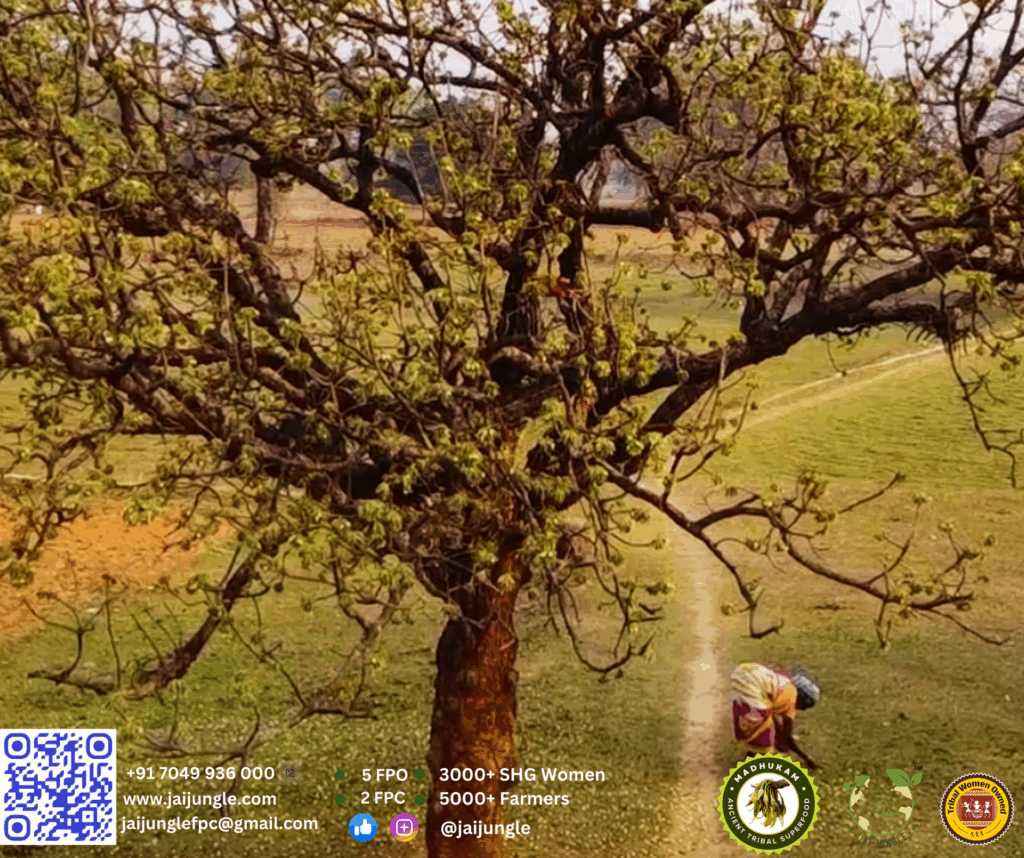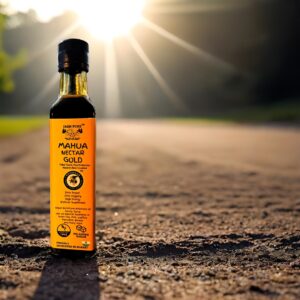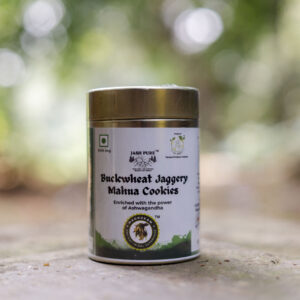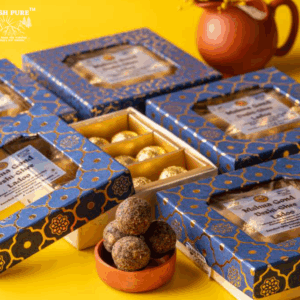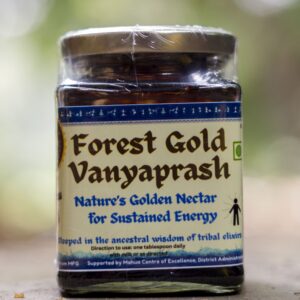More Than Flowers
Mahua (Madhuca longifolia), also called the Indian Butter Tree, is often recognized for its sweet blossoms and their role in food, liquor, and cultural rituals. Yet the leaves and bark of the Mahua tree carry equally significant value. For centuries, they have served as remedies in traditional medicine, sources of livelihood, and materials for daily life. Both are rich in bioactive compounds, reinforcing Mahua’s reputation as a “kalpavriksha” (wish-fulfilling tree) for forest communities.
Traditional Uses in Indigenous Healthcare
For rural and tribal households across central India, Mahua’s bark and leaves are essential components of household medicine.
- Bark remedies:
- Used as an astringent and emollient to treat fractures, swelling, itching, wounds, and even snake bites.
- Cooling bark infusions are administered for mouth ulcers, bleeding gums, and tonsillitis.
- Decoctions are given for skin conditions and historically even for leprosy management.
- Leaf remedies:
- Poultices of warmed leaves are applied to burns, eczema, and rashes.
- Crushed leaves are used to relieve itching and migraines.
- Sprains and fractures are traditionally bound with leaf wraps to reduce inflammation and support healing.
These practices show how Mahua leaves and bark have long been integrated into folk healthcare systems, often filling the gap where modern medicine is unavailable.
Phytochemicals and Medicinal Properties
Scientific studies increasingly validate these traditional practices.
- Secondary metabolites: Both leaves and bark are rich in flavonoids (quercetin, myricetin), triterpenoids (betulinic acid, lupeol), saponins, and tannins, all linked to antioxidant, anti-inflammatory, and antimicrobial activities.
- Antioxidant effects: Bark extracts exhibit strong free-radical scavenging activity, aligning with their use on wounds and inflammatory conditions.
- Antibacterial potential: Laboratory studies confirm leaf and bark extracts act against common pathogens, supporting their traditional role in treating oral infections and skin diseases.
- Anti-diabetic action: Animal model studies show that Mahua bark extracts significantly lower blood glucose levels, validating the use of bark decoctions in managing “Madhumeha” (diabetes) in Ayurveda and folk practice.
This convergence of ethnobotany and pharmacology demonstrates that Mahua’s non-floral parts are powerful resources for natural therapeutics.
Other Everyday Uses
Mahua’s hardy leaves and bark also support daily village life beyond medicine:
- Leaf plates: Dried leaves, stitched into plates and bowls, have served as eco-friendly dishware in fairs, temples, and households.
- Oral care: Tender bark pieces are chewed or rubbed on teeth and gums for their cleansing, astringent effects.
- Natural dyeing & soaps: Bark tannins contribute to natural dyes and indigenous herbal washes.
- Livelihood: Sale of leaves for plate-making and bark for traditional remedies supplements rural incomes.
In these ways, Mahua provides both sustenance and income, integrating into nearly every aspect of tribal life.
Sustainability of Harvesting
Traditional harvesting is guided by ecological balance:
- Leaves are mostly collected once fallen, minimizing harm.
- Bark is scraped only from the outer layer in moderation — over-stripping is avoided to prevent tree death.
This balance reflects the traditional ecological knowledge (TEK) of forest communities, where usage is always coupled with conservation. Modern research and community initiatives are now working to standardize Mahua leaf and bark extracts so that their healing benefits can reach wider audiences without threatening the tree.
Rediscovering Mahua’s Hidden Strength
While Mahua’s flowers dominate headlines as food and beverage resources, its leaves and bark remind us that this tree is truly a holistic provider. From treating wounds and diabetes to serving as plates and dyes, these parts of the tree illustrate how indigenous communities live in close partnership with nature.
By combining traditional wisdom with scientific validation, Mahua leaves and bark can find a place in modern herbal medicine, oral care, nutraceuticals, and sustainable product design — ensuring that the whole tree is valued, not just its blossoms.
References
- Roat, R. et al. (2023). Ethnomedicinal uses of Madhuca longifolia leaves and bark. ResearchGate.
- Priyanka, A. et al. (2023). Phytochemical and pharmacological properties of Madhuca longifolia. ResearchGate.
- Jodh, S. et al. (2022). Medicinal value of Mahua bark extracts. AJP Online.
- Patel, M., & Naik, S. N. (2010). Flowers of Madhuca indica J. F. Gmel.: Present status and future perspectives. IJNPR.
- Health Benefits Times. (n.d.). Mahua (Butter nut tree) benefits and uses. Retrieved from healthbenefitstimes.com.
Handpicked for You
-
Mahua Heritage Collection
Mahua Nectar Gold
Rated 0 out of 5₹699.00Original price was: ₹699.00.₹655.00Current price is: ₹655.00. INR Add to cart -
Mahua Heritage Collection
Buckwheat Jaggery Mahua Cookies
Rated 0 out of 5₹175.00Original price was: ₹175.00.₹170.00Current price is: ₹170.00. INR Add to cart -
Forest Sweets & Treats
Desi Ghee Mahua Gond Laddoos
Rated 0 out of 5₹350.00Original price was: ₹350.00.₹340.00Current price is: ₹340.00. INR Select options This product has multiple variants. The options may be chosen on the product page -
Mahua Heritage Collection
Forest Gold Vanyaprash – Pure Mahua Wellness Paste
Rated 0 out of 5₹575.00Original price was: ₹575.00.₹550.00Current price is: ₹550.00. INR Add to cart

